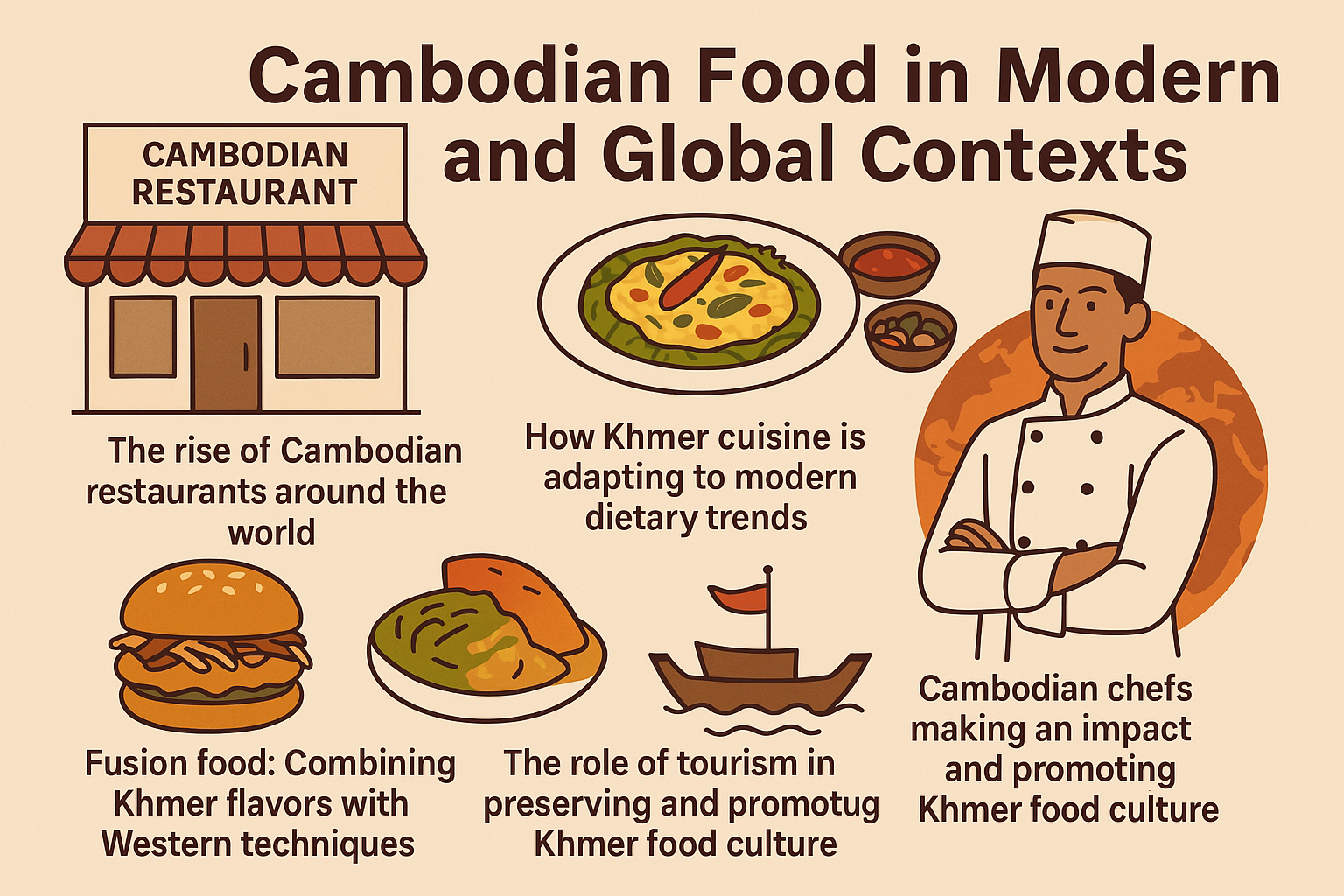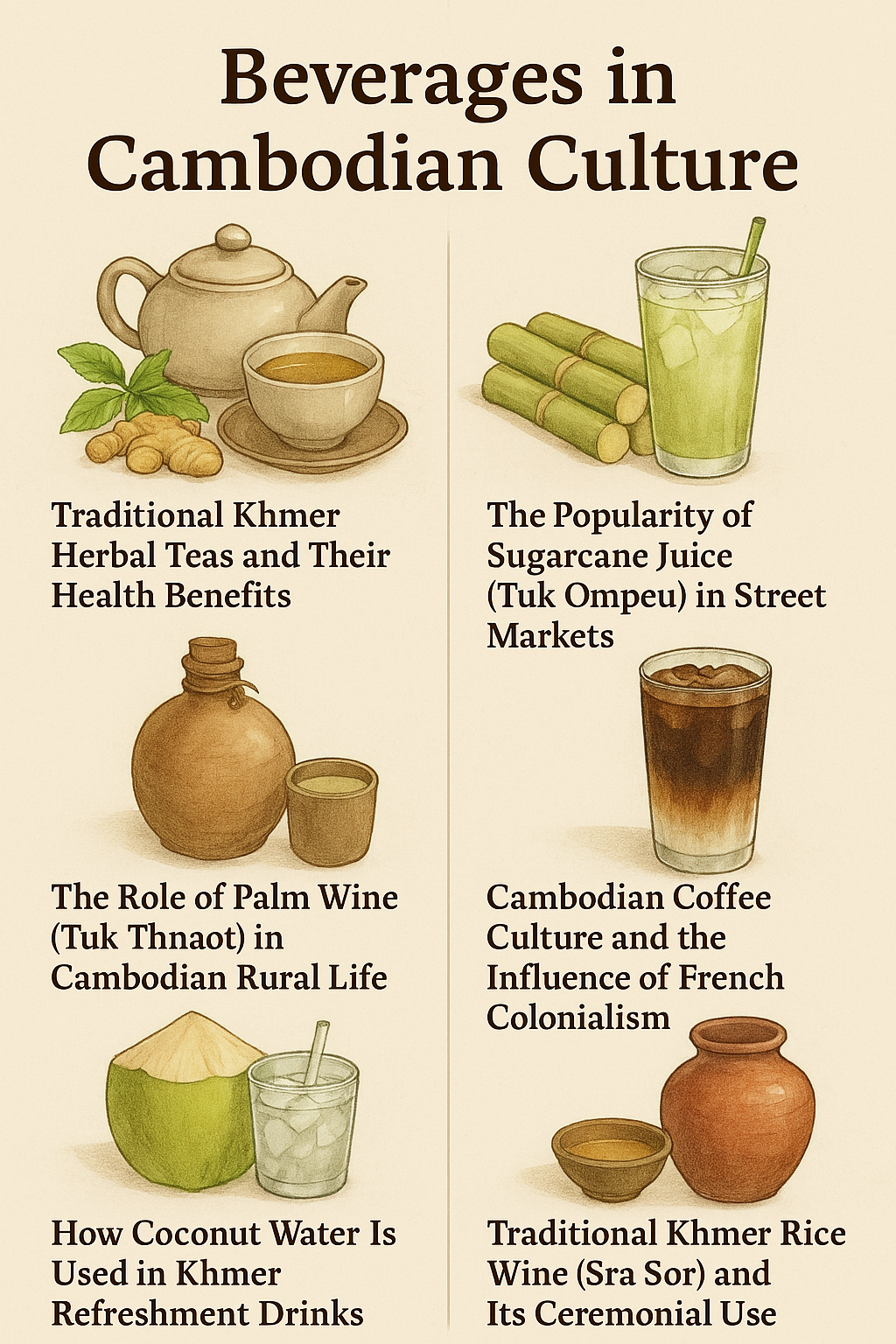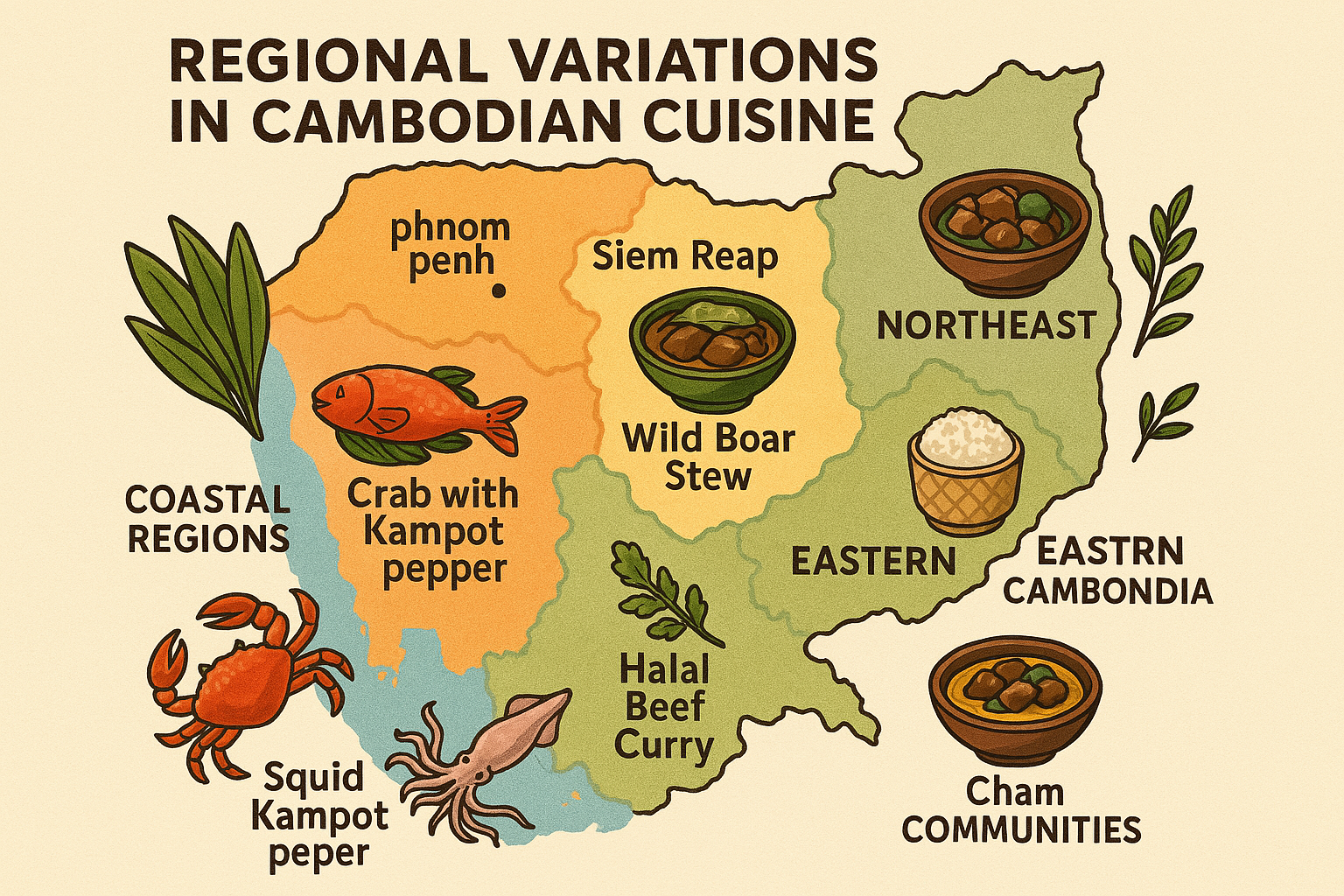Introduction
Cambodian cuisine, once overshadowed by its Southeast Asian neighbors, is rapidly emerging on the global culinary map. With its bold flavors, balance of textures, and deep cultural roots, Khmer food is finding its place in modern kitchens and international cities alike. This article explores how Cambodian cuisine is evolving—from the rise of Khmer restaurants abroad to the fusion innovations of local chefs—and how this growth is deeply tied to tourism, tradition, and identity.
1. The Rise of Cambodian Restaurants Around the World
Over the past decade, Cambodian restaurants have begun to appear in major global cities like Paris, Melbourne, New York, and Montreal. These eateries often showcase iconic dishes such as Fish Amok, Nom Banh Chok, and Prahok Ktis, attracting foodies and diaspora communities alike.
Cambodian immigrants and second-generation chefs are key drivers of this culinary expansion. Many use their platforms not only to introduce Khmer food to international audiences but also to educate diners about Cambodia’s culture and history. The growing interest in Southeast Asian cuisine has created a receptive audience for these culinary ambassadors.
🔹 Suggested Infographic:
“Global Map of Khmer Restaurants”
- Illustrated world map showing Cambodian restaurant hotspots
- Icons of signature dishes at each location
- Fun fact boxes about owners/chefs or reviews
2. How Khmer Cuisine Is Adapting to Modern Dietary Trends
As more people adopt plant-based diets, reduce sugar, and avoid gluten, Cambodian food has proven remarkably adaptable. Traditional recipes are being modified with health-conscious ingredients without sacrificing authenticity.
Examples include:
- Vegetarian Amok using tofu and mushrooms
- Low-sodium Prahok for heart-healthy diets
- Coconut milk alternatives for dairy-free options
Urban Cambodian chefs, especially in Phnom Penh and Siem Reap, are also creating “healthified” versions of street food staples, making them appealing to both locals and tourists seeking balanced meals.
🔹 Suggested Infographic:
“Modern Makeovers of Traditional Khmer Dishes”
- Before/after illustrations of classic vs. modern versions
- Ingredient swaps (e.g., tofu for meat)
- Health benefits comparison (e.g., calories, fiber)
3. Fusion Food: Combining Khmer Flavors with Western Techniques
Cambodian chefs are increasingly experimenting with fusion cuisine, combining time-honored ingredients like kroeung, palm sugar, and fermented fish with international cooking styles. Some notable trends include:
- Khmer-style tacos with lemongrass chicken and pickled mango
- Amok ravioli in coconut curry reduction
- Num Pang-inspired burgers using prahok aioli and grilled pork
These innovations are gaining traction in both local and global markets, with chefs crafting menus that appeal to adventurous palates while respecting the soul of Khmer cooking.
🔹 Suggested Infographic:
“Fusion Dishes Born from Khmer Roots”
- Side-by-side of fusion and traditional inspirations
- Dish names, key ingredients, and cultural commentary
4. Cambodian Chefs Making an Impact on the International Stage
A new generation of Cambodian chefs is leading the charge in rebranding the country’s food identity. Names like Chef Nak, who promotes traditional home-style Cambodian cuisine, and Luu Meng, known for his refined reinterpretations of Khmer classics, are now recognized across Asia and beyond.
In global food expos, television shows, and fine dining circuits, these chefs are not only celebrated for their skills but also for their cultural storytelling through food. Their work contributes to a renewed global interest in Cambodian gastronomy.
🔹 Suggested Infographic:
“Notable Cambodian Chefs on the Global Stage”
- Illustrated portraits with brief bios
- Signature dishes
- Locations and accolades
5. The Role of Tourism in Preserving and Promoting Khmer Food Culture
Tourism plays a critical role in the preservation and promotion of Khmer culinary traditions. Cooking classes, food tours, and market visits have become staples in Cambodian travel itineraries. These activities do more than offer a fun experience—they educate visitors about Cambodian history, ingredients, and social customs.
Many tourism initiatives support local farmers, fisherfolk, and home cooks, encouraging sustainable food systems and community-based development. Additionally, culinary tourism has sparked a revival of endangered cooking techniques, traditional ingredients, and forgotten recipes.
🔹 Suggested Infographic:
“How Culinary Tourism Supports Khmer Food Culture”
- Flowchart: Tourist → Cooking class → Local chef → Farmers → Cultural preservation
- Icons: ingredients, tools, local markets, tourists
Conclusion
Cambodian cuisine is no longer confined to its homeland—it’s spreading, evolving, and captivating palates across the world. Yet, even as it adapts to modern trends and global platforms, the essence of Khmer food remains deeply rooted in tradition. Whether through a bowl of Nom Banh Chok on a Paris street or a tofu Amok in Phnom Penh, Cambodian food continues to be a bridge between past and present, local and global.





